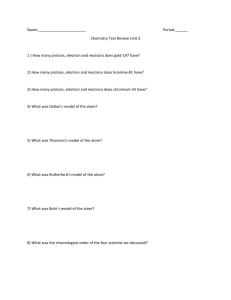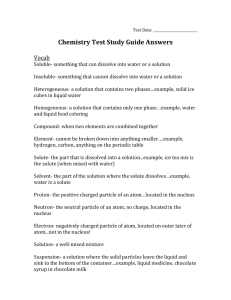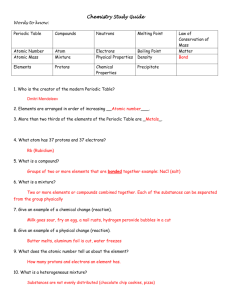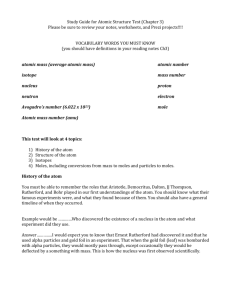Unit 1 c
advertisement
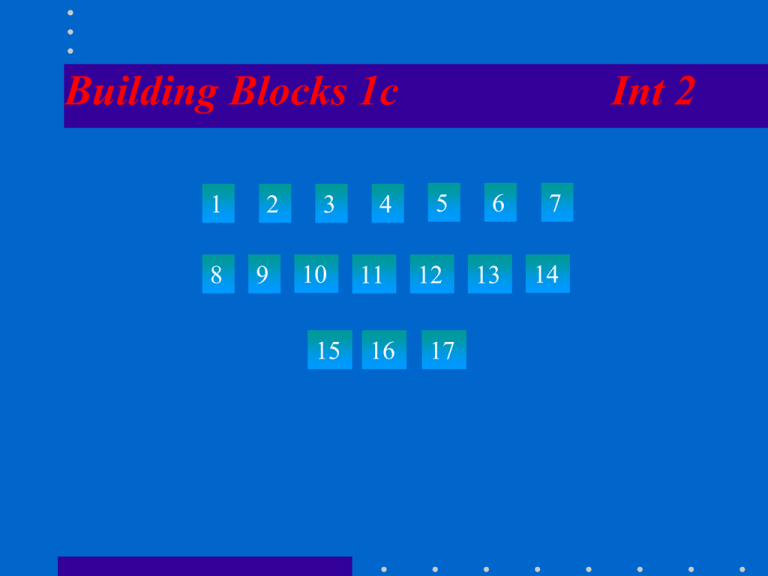
Building Blocks 1c 1 8 2 9 3 10 15 4 11 16 Int 2 5 6 7 12 13 14 17 Name the particles which make up an element? Atom Name the three sub atomic particles found in an atom. Proton, electron and neutrons. Name the particles found in the nucleus Protons and neutrons Where are the electrons in an atom? Outside the nucleus State the charge and mass of a proton, neutron and an electron. Mass charge proton 1 1+ electron 0 1- neutron 1 no charge Which number identifies an element? Atomic number Why are atoms neutral? They have the same number of positive charges and negative charges What does the atomic number tell you about an atom? The number of positive protons in the nucleus What is the mass number of an atom? The number of protons and the number of neutrons added together If an atom has an atomic number of 12, how many electrons are there? 12 An element has a mass number of 19 and an atomic number of 9. How many neutrons is in the atom. 19 - 9 =10 35 17 Cl Calculate the number of protons, electrons and neutrons in the atom protons = 17 electron = 17 neutrons = 18 Why do potassium and sodium have similar chemical properties? They have the same number of outer electrons. How many outer electrons do the elements in groups 1 to 7 have? Group 1 2 3 4 5 6 7 Number of outer electrons 1 2 3 4 5 6 7 What are isotopes? Atoms of the same element with the same atomic number but different mass numbers. Explain why strontium has a relative atomic mass of 87.6 yet no strontium atom has this mass? Elements are made up of isotopes with different mass numbers. 87.6 is the average mass of the isotopes. What term is used to describe atoms of the same element with different mass numbers. Isotopes Building Blocks 1c 1 8 2 9 4 3 10 15 11 16 Int 2 5 6 7 12 13 14 17




